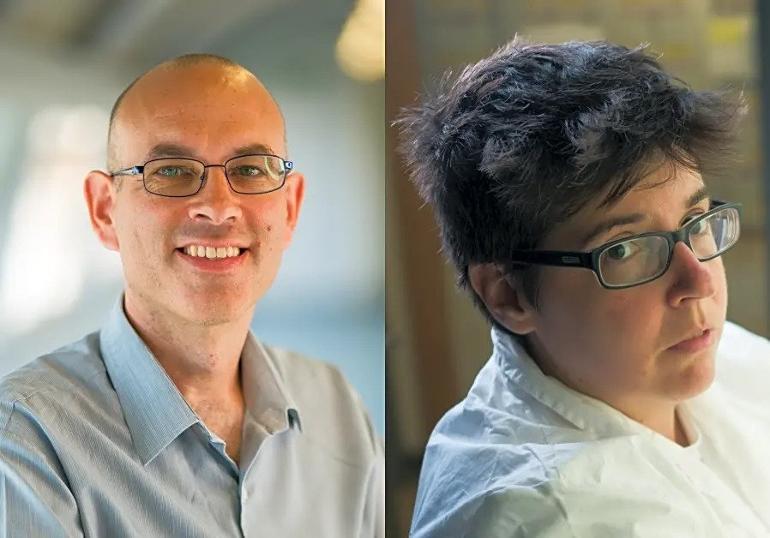Prof. Roy Kishony (L) and Dr. Viktória Lázár from Technion-Israel Institute of Technology. (credit: TECHNION)
In the current study, a combination of different antibiotic drugs that prevent the formation of resistance was examined.
By JUDY SIEGEL-ITZKOVICH Updated: OCTOBER 21, 2022
A technique to measure the long-term effect of antibiotic combinations has been developed by researchers at the Technion-Israel Institute of Technology in Haifa. These drug “cocktails” are of major interest to the scientific and medical community because the use of single antibiotics often leads to the rapid development of bacterial resistance to these drugs.
The research published under the title “Antibiotic combinations reduce Staphylococcus aureus clearance” in the journal Nature was led by Technion researchers Prof. Roy Kishony from the Faculty of Biology and Dr. Viktória Lázár, a postdoctoral student in his lab who is now working at the Synthetic and Systems Biology Unit in the European Union Institute for Biological Research in Szeged, Hungary.
They discovered that in many cases, a combination of several antibiotics might actually reduce the treatment’s effectiveness in the long term – meaning that the combination of drugs could make the combination inferior to that of each individual drug. However, they point to specific combinations that do manage to prevent the development of resistance and protect the patient for a long period from the aggressive bacteria.
The bacterium tested in the study is Staphylococcus aureus – a particularly violent pathogen that developed resistance to many types of antibiotics. This bacterium is responsible for a significant part of nosocomial (in-hospital or in-clinic) infections. The study was conducted both in cultures of this bacterium in the lab and in an animal model (the Galleria mellonella moth).
Antibiotics are a family of drugs that play a central role in modern medicine and save lives on a daily basis. The natural antibiotic substances that developed during evolution in fungi and yeast were discovered about a century ago in the research of London’s Sir Alexander Fleming, Australia-born Howard Walter Florey and Ernst Boris Chain (an immigrant to England from Berlin who was of Russian-German-Jewish descent). The three shared the Nobel Prize in Physiology or Medicine for 1945. In the past century, antibiotic treatment has saved hundreds of millions of people.
Antibiotics are a double-edged sword
However, the success of antibiotic therapy has turned it into a double-edged sword because the widespread use of these anti-bacterial drugs leads to the evolutionary development of bacteria that develop resistance. This trend raises a justified fear of a post-antibiotic era – a period when bacteria will no longer respond to antibiotic drugs and people will die, as in the past, from infections that are now considered mild and not dangerous.
The laboratory of Prof. Kishony, one of the leading experts in the field of antibiotic resistance, develops methods that make it possible to estimate in advance the resistance of a given bacterium to a given antibiotic in the present and even to predict the resistance level it is expected to develop in the future. In the current study, a combination of different antibiotic drugs that prevent the formation of resistance was examined.
The researchers note that the COVID-19 pandemic has increased the use of antibiotics, even though SARS-CoV-2 is not affected by antibiotics because it is a virus and not a bacterium. However, giving antibiotics helps COVID-19 patients to avoid secondary bacterial infections. With the growth of antibiotic use, the evolution of resistant Staphylococcus aureus strains accelerated.
